For the past 4-5 years the fitness industry has seen the increased popularity of the kettlebell. This very simple, yet very effective piece of equipment can literally shape and form one’s physique. I can also point out that research states that no other piece of equipment burns as many calories per minute and increases lean body mass than the kettlebell. I and my clients (as you can see in the videos below) use kettlebells often. We can hit more muscles per exercise than most any other apparatus. So lets take a look at the history of this piece of equipment and show some different exercises:
Oh, you said “Kettlebell”!The kettlebell (also called a girya) is a piece of cast iron that looks like a basketball with a suitcase handle. The kettlebell was born in Russia, and is centuries old and first appeared in a Russian dictionary in 1704. In a 1913 article “Not a single sport develops our muscular strength and bodies as well as kettlebells. The United States Secret Service utilizes a single arm snatch test: 10 minutes with a 24 kg kettlbell for 250 reps. So from a scientific point of view why would one pick kettlebells:
- Displaced Center of Gravity – The center of gravity of the KB is six to eight inches below the center of your hand. Barbells and dumbbells center the weight with your hand. The offset of the KB makes the weight “alive” in your hand and increases the difficulty and benefit of many of the drills. KBs can do anything a dumbbell can do, even better – but not vice-versa.
- Thick Handles – Thick bar training is a proven way to increase grip strength and the difficulty of certain drills.
- Variety – The number of KB drills is only limited by your imagination and safety. One KB, two KB and combination drills provide unlimited protection from boredom.
- Trains Hip Extension – Ballistic KB drills provide an intense load to the hips and posterior chain. Very similar to the vertical leap, this “grooved” hip extension transfers to many athletic skills such as jumping, running and throwing.
- Trains Deceleration – When you “catch” the KB by “throwing” it behind you, the agonists and antagonists must co-contract to produce force reduction and deceleration of the weight. This is a skill we use daily when we change directions while walking or running.
- Balance of Tension and Relaxation – Tension is strength; relaxation is speed. An athlete must balance both to maximize skill. KB training utilizes a balance of tension and relaxation.
- Training Will Power – When the KB drills are done for high repetitions, they forge an iron will and iron body. Try a 10-minute set of snatches for proof. Enjoy the pain.
- Fun – With the ability to actually “juggle,” spin, pass hand to hand and throw the KB, KB training has a fun factor and variety not found in traditional training.
6 Core Lifts
- Swing (rotation, flip and catch)- grab KB with thumb hooked over index finger, solid connection between KB and your hand by keeping arm straight at the bottom of the swing so KB does not shake in hand, follow KB with eyes and load hips
- One Arm Clean
- One Arm Press
- One Arm Push Press
- One Arm Snatch
- Clean and Jerk (Long Cycle)- 3 points to rest; initial clean, overhead lockout and drop
Specialty
- Windmill
- Halo
- Slingshot
- Figure 8
- Turkish Getup
- Renegade
- Arm bar press
- Wood chop
Sample Workout
- Turkish-Get-Up – 3 sets of 3 reps
- Two Hand Swing – 2 sets of 15 reps
- Standing Barbell Military Press – 3 sets of 3 reps
- Pull-ups – 4 sets of 10 reps
- Deadlift – 3 sets of 3 reps @ 80% of max
- Single leg Squats – 2 sets of 5 reps
- One arm Swing – 5 sets of 10+10 (10Left-10Right) 1:1 work/rest ratio
- Flexibility drills/Dynamic mobility





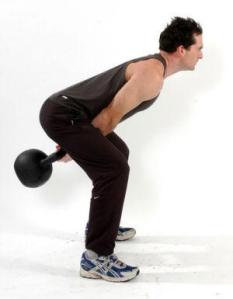
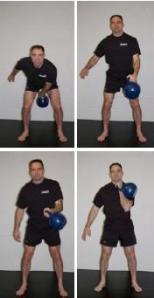
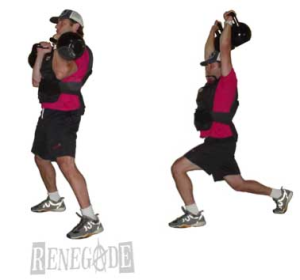
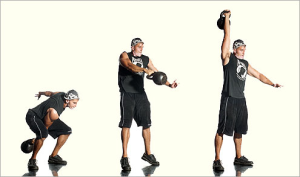
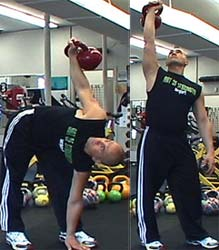
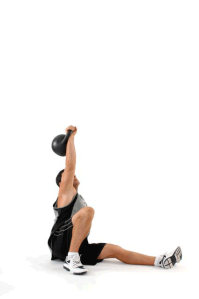
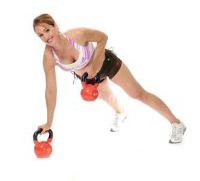
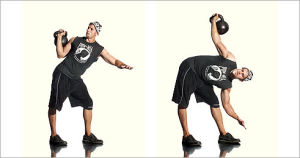




Leave a Reply